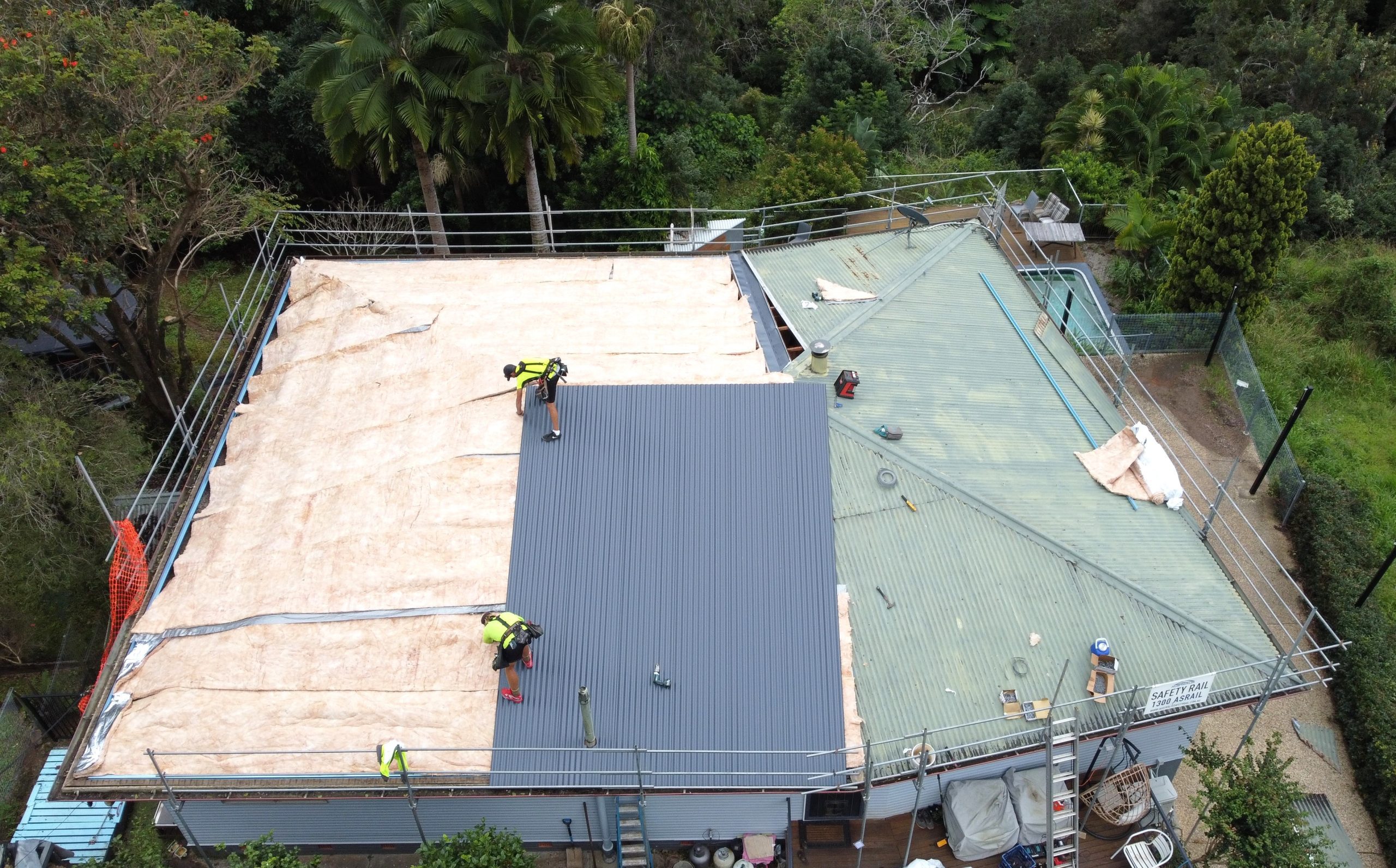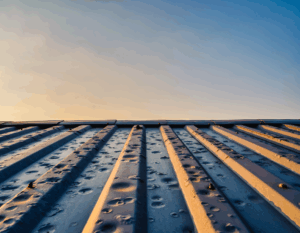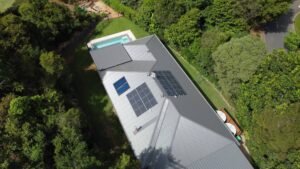Roof sarking, a vital component of modern roofing systems, plays a crucial role in protecting your home from various environmental elements. As a thin, pliable membrane installed directly below the roof tiles or metal roofing, it acts as a secondary skin, safeguarding against wind, rain, dust, and more.
Understanding Roof Sarking
Roof sarking provides several benefits:
- Moisture Control: It restricts storm rains and manages condensation within the home, preventing moisture-related issues like mould growth and structural decay.
- Temperature Regulation: The reflective foil layer of roof sarking deflects radiant heat from the sun, contributing to a cooler and more comfortable home interior.
- Energy Efficiency: It enhances the insulation in the roof space, thereby stabilising indoor temperatures and reducing energy consumption.
- Wind and Dust Barrier: Sarking serves as an effective barrier against dust and debris, maintaining the cleanliness and integrity of your roof cavity.
- Fire Protection: In bushfire-prone areas, it offers an additional layer of defence against fire embers.
Installation and Repair
Installing roof sarking is typically done during the construction phase of a new home or during major roof renovations. It can be challenging to install on existing roofs as it often requires removing the existing roofing materials.
Costs and Varieties
The cost of roof sarking varies, with overall expenses depending on the size and type of sarking chosen. Various suppliers offer different sarking options, suitable for different roof types and climates.
Compliance and Recommendations
According to the Building Code of Australia, roof sarking is mandatory under certain conditions, such as in bushfire-prone areas or for roofs with specific pitches and lengths. It’s generally recommended for all tiled roofs to prevent potential moisture damage.
Choosing the Right Sarking
When selecting roof sarking, consider factors like thermal efficiency, the type of roof (tiled or metal), and your geographic location. It’s advisable to consult with a professional for proper installation and to ensure compliance with local building regulations.
What is Aircell?
Aircell insulation, when used in roofing, functions as a high-performance thermal barrier designed to reduce heat transfer, thereby enhancing the energy efficiency of buildings. Under metal roofs, Aircell insulation is often installed directly beneath metal roofing sheets. It can be rolled out across the roof structure, typically over the roof purlins (horizontal supporting structures), before the metal sheets are laid on top. The reflective foil sides of the Aircell product face outward to reflect radiant heat away from the building, helping to keep it cooler in summer.
What is an Anticon Blanket?
An Anticon blanket is specifically designed for use with metal roofs to provide both thermal insulation and condensation control. The use of Anticon blankets in roofing is particularly important in areas with extreme weather conditions, as it significantly enhances the comfort and energy efficiency of buildings. Anticon blankets typically consist of a layer of glass wool insulation bonded to a reflective foil facing. The glass wool layer provides thermal insulation by trapping air and reducing heat flow, while the reflective foil layer serves to reflect radiant heat away from the roof.
For a comprehensive overview of our roofing services, visit our homepage to learn more about roof replacement options and services, check out our detailed info here.
Key Takeaways
Definition: Roof sarking is a flexible membrane installed below roofing materials for protection and insulation.
Benefits: Offers moisture control, temperature regulation, energy efficiency, a dust barrier, and fire protection.
Installation: – Recommended during new construction or major renovations; can be installed in existing roofs with certain conditions.
Cost: Overall cost depends on roof size and sarking type.
Necessity: – Mandatory in certain conditions according to the Building Code of Australia; highly beneficial for all roofs.




